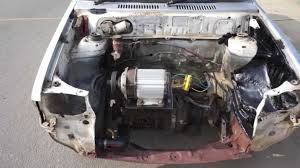
Breaking News
 Elon Tells Rogan the Real Reason Democrats are Prolonging the Government Shutdown [WATCH]
Elon Tells Rogan the Real Reason Democrats are Prolonging the Government Shutdown [WATCH]
 Newsom: Trump Is Trying to Rig the Election -- He Knows GOP Will Lose
Newsom: Trump Is Trying to Rig the Election -- He Knows GOP Will Lose
 There is zero justification for the Department of Justice's silence while the most serious...
There is zero justification for the Department of Justice's silence while the most serious...
 Gabbard Says Trump Has Ended America's Era Of 'Regime Change'
Gabbard Says Trump Has Ended America's Era Of 'Regime Change'
Top Tech News
 The 6 Best LLM Tools To Run Models Locally
The 6 Best LLM Tools To Run Models Locally
 Testing My First Sodium-Ion Solar Battery
Testing My First Sodium-Ion Solar Battery
 A man once paralyzed from the waist down now stands on his own, not with machines or wires,...
A man once paralyzed from the waist down now stands on his own, not with machines or wires,...
 Review: Thumb-sized thermal camera turns your phone into a smart tool
Review: Thumb-sized thermal camera turns your phone into a smart tool
 Army To Bring Nuclear Microreactors To Its Bases By 2028
Army To Bring Nuclear Microreactors To Its Bases By 2028
 Nissan Says It's On Track For Solid-State Batteries That Double EV Range By 2028
Nissan Says It's On Track For Solid-State Batteries That Double EV Range By 2028
 Carbon based computers that run on iron
Carbon based computers that run on iron
 Russia flies strategic cruise missile propelled by a nuclear engine
Russia flies strategic cruise missile propelled by a nuclear engine
 100% Free AC & Heat from SOLAR! Airspool Mini Split AC from Santan Solar | Unboxing & Install
100% Free AC & Heat from SOLAR! Airspool Mini Split AC from Santan Solar | Unboxing & Install
 Engineers Discovered the Spectacular Secret to Making 17x Stronger Cement
Engineers Discovered the Spectacular Secret to Making 17x Stronger Cement
This Maruti 800 Is The Cheapest EV Conversion We've Ever Seen

When there's a will, there's a way, right? Rich Rebuilds proved that with a rat rod and a salvage Zero S, but this Indian YouTube channel called Technical Partha beat Benoit and created what must be the cheapest EV conversion we have ever seen or heard about. All it took was a Maruti 800, an electric motor, a controller, and a 60V lithium-ion battery. Oh, and a steel plate as well.
You must be wondering what the steel plate has to do with anything. The explanation is that Technical Partha decided to keep the combustion engine as the base for the motor. We always knew electric motors were superior to combustion engines, but the Indian youtuber took this literally to an entirely new level. Part of the genius in the conversion and many of its future problems is here. We only wonder if this conversion is to have a long life at all.
The steel plate – apparently thicker than the one used on the Tesla Cybertruck – came as a rough cylinder head replacement. Technical Partha drilled it to have the same holes at the top of the engine block and four more. These holes had the purpose of attaching the steel plate to the top of the block and the other four to bolt the electric motor over it.



